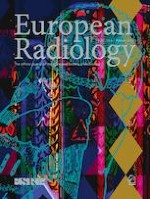Erschienen in:

26.11.2021 | Editorial Comment
Artificial intelligence on MRI for molecular subtyping of diffuse gliomas: feature comparison, visualization, and correlation between radiomics and deep learning
verfasst von:
Zijian Zhou
Erschienen in:
European Radiology
|
Ausgabe 2/2022
Einloggen, um Zugang zu erhalten
Excerpt
Given advances in tumor molecular analysis, the use of imaging phenotypes to noninvasively determine brain tumor genotypes has become an intriguing possibility [
1]. According to the World Health Organization’s 2016 revised classification guidelines, diffuse gliomas are classified into five molecular subtypes: (1) oligodendroglioma and anaplastic oligodendroglioma with isocitrate dehydrogenase (IDH) mutation and 1p/19q codeletion; (2) diffuse and anaplastic astrocytoma with IDH mutation; (3) diffuse astrocytoma with wild-type IDH; (4) glioblastoma (GBM) with IDH mutation; and (5) GBM with wild-type IDH. The first three are low-grade gliomas (LGGs) with grades of 2 or 3, and the latter two are GBM with the grade of 4. Noninvasively and preoperatively differentiating the molecular subtypes of diffuse gliomas is critical for customizing patient treatment and prognosis prediction. However, completing such tasks can be challenging with conventional statistical methods, as correlations between imaging traits and molecular subtypes can be hard to identify, and discoveries may be inconsistent between studies [
2]. …











